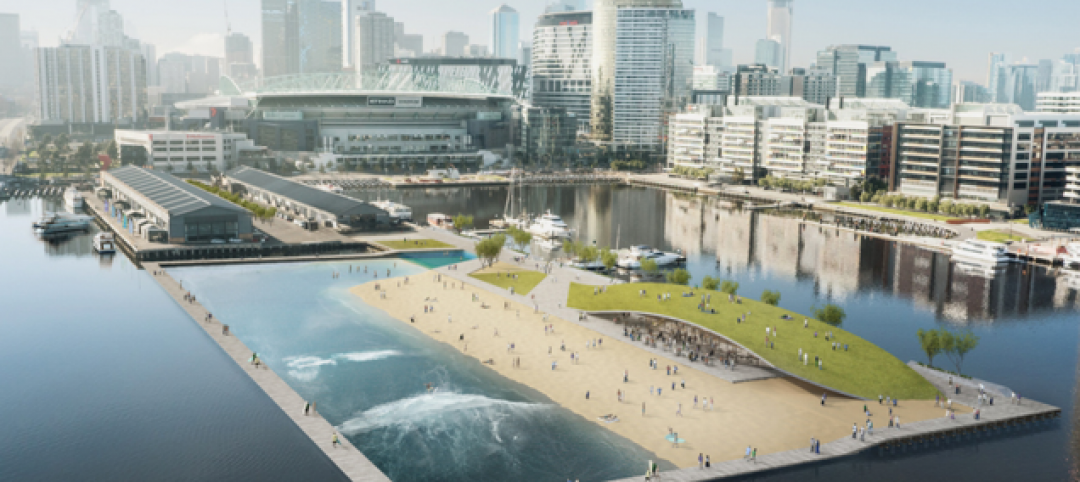Perkins&Will and the American Institute of Architects (AIA) today released best practices for creating and implementing comprehensive diversity programs for U.S. firms. In a white paper entitled “Creating a Culture of Justice, Equity, Diversity, and Inclusion in Your Architectural Practice,” authors Gabrielle Bullock, FAIA and Bill Schmalz, FAIA maintain that architecture firms must rigorously uphold J.E.D.I. principles to remain relevant to clients, attractive to talent, and competitive in an increasingly diverse world.
“Our industry and society are facing an unprecedented convergence of crises. Economic, health, environmental, social, and racial justice challenges have presented us not just with an opportunity, but also a responsibility, to address them,” says Bullock, who has served as director of global diversity at Perkins&Will since 2013. “We can elevate the industry by challenging the status quo and reimagining the future by looking through the J.E.D.I. lens.”
The authors outline seven easy-to-understand steps, such as articulating a vision, identifying a leader, establishing a network of partners, and developing tools to effect positive change at both the educational and professional levels. If followed, the steps promise to help firms of any size make measurable progress toward social and cultural competency.

“The profession is long overdue in addressing these topics,” says Schmalz, a member of the Perkins&Will LGBTQ+ affinity group in Los Angeles. “We are hoping this paper gives firms a process and the tools they can use to achieve success in creating a culture of justice, equity, diversity and inclusion.”
In addition to outlining best practices, the white paper calls for the urgent establishment of J.E.D.I. programs within every U.S. firm. The reasons, the authors argue, are clear: First, demographics in the U.S. are changing—and rapidly: Today’s professional workforce is made up of more people of color, more women, and more openly LGBTQ+ people than ever before. Second, clients seeking architectural services are increasingly diverse and, consequently, more likely to hire teams who look like and identify with them; a firm’s failure to reflect the diversity of its clients is a failure to meet its clients’ needs. And third, architects have an imperative, as social visionaries, to use the power of design for the greater human good.
“Human society is complex, multicolored, and multicultural. Architecture firms must reflect this truism, authentically, in everything they do,” says Bullock. “Not only does their future success depend on it; the future health and well-being of entire generations depend on it, too.”
Click here to read and download the white paper.
Related Stories
| Nov 21, 2014
Nelson adds to its stable with EHS Design acquisition
This represents Nelson’s fifth merger or acquisition in 2014, during which the firm’s net fee revenue has increased by 60% to $65 million.
| Nov 21, 2014
Nonresidential Construction Index rises in fourth quarter
There are a number of reasons for optimism among respondents of FMI's quarterly Nonresidential Construction Index survey, including healthier backlogs and low inflation.
| Nov 21, 2014
NCARB: Number of architects in U.S. grows 1.6% in 2014, surpasses 107,500
The architecture profession continues to grow along with a gradually recovering economy, based on the results of the 2014 Survey of Architectural Registration Boards, conducted by the National Council of Architectural Registration Boards.
| Nov 20, 2014
Lean Led Design: How Building Teams can cut costs, reduce waste in healthcare construction projects
Healthcare organizations are under extreme pressure to reduce costs, writes CBRE Healthcare's Lora Schwartz. Tools like Lean Led Design are helping them cope.
| Nov 19, 2014
The evolution of airport design and construction [infographic]
Safety, consumer demand, and the new economics of flight are three of the major factors shaping how airlines and airport officials are approaching the need for upgrades and renovations, writes Skanska USA's MacAdam Glinn.
| Nov 19, 2014
Construction unemployment hits eight-year low, some states struggle to find qualified labor
The construction industry, whose workforce was decimated during the last recession, is slowly getting back on its feet. However, in certain markets—especially those where oil drilling and production have been prospering—construction workers can still be scarce.
Sponsored | | Nov 19, 2014
3 technology trends on the horizon
As technology continues to evolve exponentially, construction firms have ongoing opportunities to enhance the quality, speed, and efficiency of building projects and processes. SPONSORED CONTENT
Sponsored | | Nov 19, 2014
Long-life coatings vs. long-life screws
Are you concerned with the long-life protection of your metal building project? SPONSORED CONTENT
Sponsored | | Nov 19, 2014
Fire resistive, blast-resistant glazing: Where security, safety, and transparency converge
Security, safety and transparency don’t have to be mutually exclusive thanks to new glazing technology designed to support blast and fire-resistant secure buildings. SPONSORED CONTENT
| Nov 19, 2014
Must see: Arup, Damian Rogers propose urban surf park in Melbourne
The surfing pool would offer 98-foot-wide waves that would run the length of the 500-foot-long enclave.
















